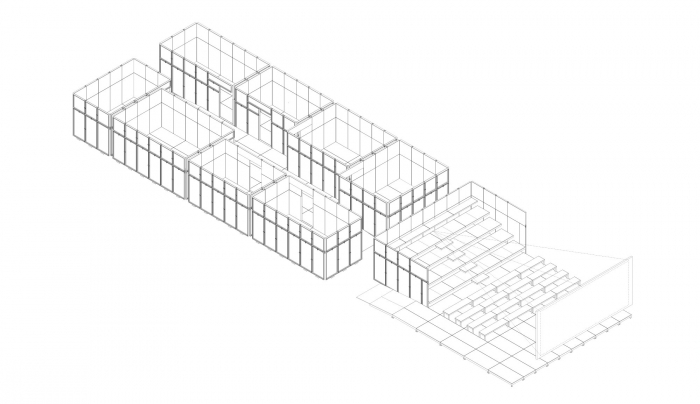Exhibition Architecture 2018 – Territories of Complicity
Exhibition Architecture 2018 – Territories of Complicity
From the Studiolo to the Free Port
by raumlaborberlin
With the exhibition architecture for Territories of Complicity, raumlaborberlin address the evolution of the physical space in which works of art have been collected over the centuries. In Europe the concept of art has changed since the early modern period, and with the emergence of the new class of the bourgeoisie, works of art became amassed a new value in addition to their religious and representational purpose.
The enclosed spaces of cabinets or studiolos, private study retreats in noble palaces, became the first collector’s rooms of the new era. In later iterations—as Wunderkammern and Kunstkabinette—these became precursors of contemporary museums. There, the encyclopaedic collected items were presented to a small audience, demonstrating the power and culturedness of the owner. Collections grew primarily with the purpose of serving scientist and researchers for their studies and later developed into museums: institutions that allowed a wider audience to enjoy a free access to art and culture.
Over the last few centuries, artistic artefacts have increasingly been collected like goods and exchanged on the market where, like other assets, their economic value is always affected by changes. As an asset, the artwork must be protected to preserve his value. Exhibiting it is seen as consumption. Transportation is always risky and even exposure to light can be harmful. Safe storage is necessary, preferably in countries where transitions of goods are free of customs duties and taxes. In free ports, collectors are once again reliant on the use of intimate spaces to preserve their treasures, so intimate that not even they have direct access to the artworks.
The exhibition hall of the Haus der Kulturen der Welt is invaded by a massive object. A platform, akin to a container ship, features eight container rooms, in which twelve artists are exhibiting, as well as a stage area for presentations and discussions. The works of art are displayed in cabinets as they once were, collected valuables of the Wunderkammer, but organized in a building that appears like a segment of an endless warehouse corridor with store rooms on both sides. The construction is realized using a ready-made; the stage element—a system based on a strong, defined grid, normally used to build horizontal surfaces for events—is reinterpreted and used vertically to create walls. Its modularity and the sharp and shiny technical appearance of the aluminium frames make reference to economic and spatial rationality and optimization that form the foundation of the system, linking to the physicality of free port facilities. At the same time, the warm brown of the elements and the enclosed spaces are reminiscent of the intimacy of the Renaissance studiolos, characterized by wooden wall paneling and furniture.


